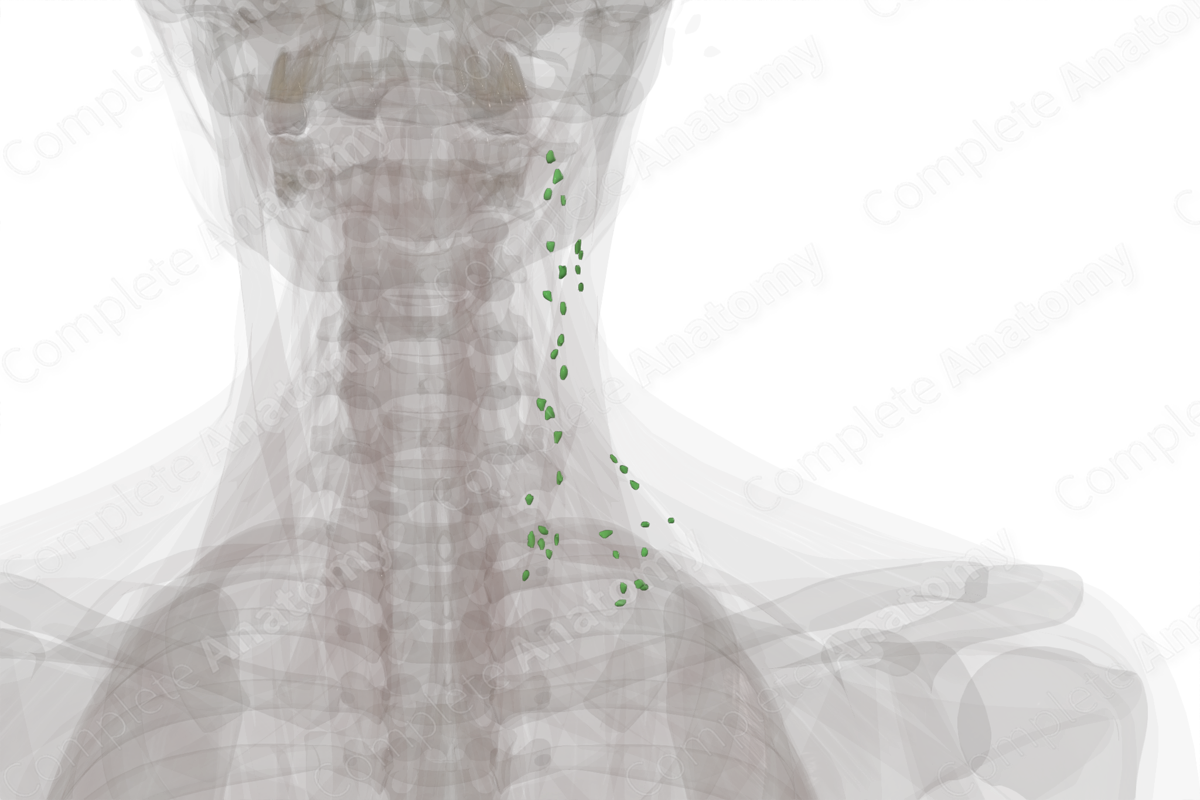
Description
In order to get from the tissues of the head back to the venous circulation, lymphatic fluid must travel through the neck to join a network of larger lymphatic vessels that drain into the brachiocephalic trunks. The deep lateral cervical nodes of the neck are the primary route of drainage of lymphatic fluid from the head. The vast majority of this fluid travels via one of the three groups of deep lateral cervical lymph nodes, by far the most prevalent course being via the internal jugular nodes. These nodes filter lymphatic fluid collected in the lymphatic vessels in the head in addition to receiving efferents from local structures in the neck.
There are three divisions of nodes that make up the group of deep lateral cervical nodes. These are the accessory nodes, which follow the course of the accessory nerve through the neck; the internal jugular nodes located in close proximity to the internal jugular vein; and the supraclavicular nodes, the most inferior of the deep lateral cervical nodes, which are found embedded in the fascia superior and somewhat posterior to the clavicle. There are a number of cross-connections between these three groups of nodes, some with smaller intercalated nodes along the connecting vessels (Földi et al., 2012).
References
Földi, M., Földi, E., Strößenreuther, R. and Kubik, S. (2012) Földi's Textbook of Lymphology: for Physicians and Lymphedema Therapists. Elsevier Health Sciences.




